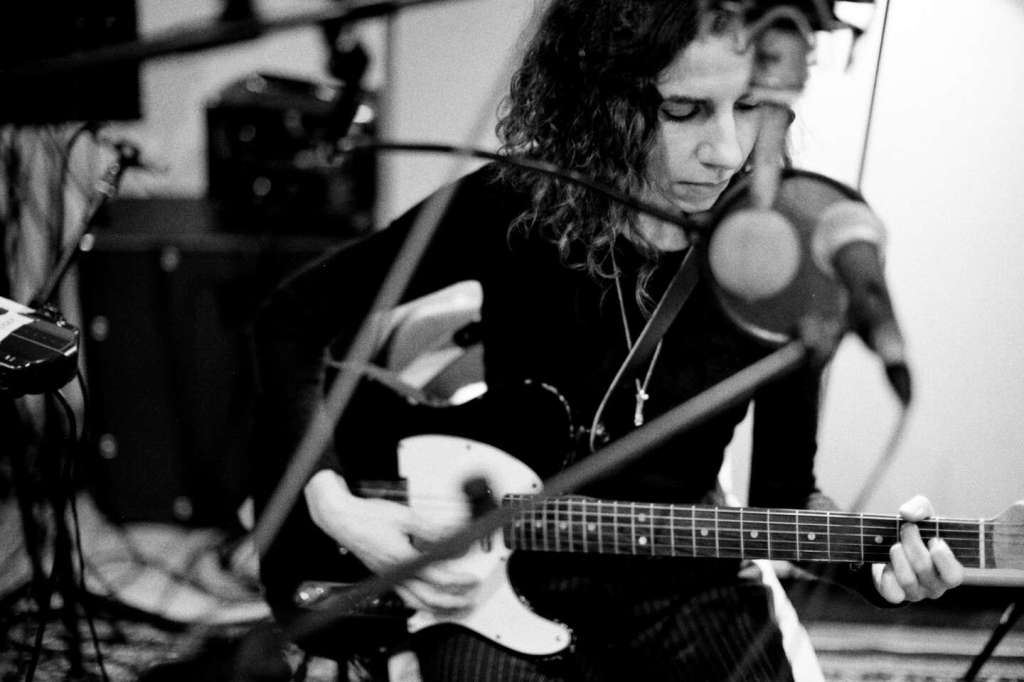In an industry where reinvention is often a marketing strategy rather than an artistic pursuit, PJ Harvey stands out as a true chameleon. Over her three-decade career, Harvey has not only transformed her sound but also continually challenged and redefined what it means to be a rock artist. With her intense, evocative performances and boundary-pushing albums, she has established herself as one of the most influential and innovative musicians of her generation.
From Rural Beginnings to Raw Power
Polly Jean Harvey was born in 1969 in Bridport, Dorset, a rural corner of England that would later infuse her music with a distinctive sense of place and narrative depth. Her early exposure to music came from her parents, who introduced her to blues, jazz, and rock. This eclectic mix of influences shaped her unique sonic palette.
Harvey burst onto the music scene in the early 1990s with her debut album, Dry (1992), an album that announced her arrival with a ferocious blend of raw guitar riffs and visceral lyrics. Songs like “Sheela-Na-Gig” and “Dress” were unflinching in their exploration of female sexuality and empowerment, setting Harvey apart from her contemporaries. Her follow-up, Rid of Me (1993), produced by Steve Albini, further cemented her reputation. The album’s stark production and intense performances, particularly on tracks like “50ft Queenie,” showcased her ability to channel raw emotion and confrontational energy.

The Evolution of an Artist
As the 1990s progressed, Harvey continued to evolve. To Bring You My Love (1995) marked a significant shift, incorporating elements of blues and gothic rock with more polished production. This album, with its standout track “Down by the Water,” broadened her appeal and demonstrated her versatility as an artist. The follow-up, Is This Desire? (1998), delved into more experimental territory, blending electronic elements with her trademark lyrical intensity.
Harvey’s willingness to explore new sounds and themes has been a constant throughout her career. The turn of the millennium saw her release Stories from the City, Stories from the Sea (2000), a critically acclaimed album that won the Mercury Prize. With its more accessible, polished rock sound and tracks like “Good Fortune” and “A Place Called Home,” the album became one of her most commercially successful efforts.

A Chronicler of Society
In the years that followed, Harvey’s work took on a more political and social dimension. Let England Shake (2011), another Mercury Prize-winning album, is a poignant meditation on war and its impact on her home country. The album’s lyrical depth and innovative use of folk melodies demonstrated her ability to address complex themes with subtlety and power.
Her subsequent album, The Hope Six Demolition Project (2016), was inspired by her travels to Kosovo, Afghanistan, and Washington, D.C. The album’s politically charged lyrics and documentary-style production reflect her commitment to bearing witness to the world’s injustices. Tracks like “The Community of Hope” and “The Wheel” showcase her ability to blend sharp social commentary with compelling music.
Multifaceted Artistry
Beyond her music, PJ Harvey has ventured into other artistic fields, including poetry and visual art. Her collaboration with photographer Seamus Murphy, resulting in the book and multimedia project The Hollow of the Hand, showcases her talents as a writer and her keen observational skills. Harvey’s ability to translate her artistic vision across different mediums highlights her versatility and depth as an artist.

Legacy and Influence
PJ Harvey’s influence on contemporary music is profound. Her fearless approach to songwriting and her ability to continually reinvent herself have inspired countless artists across genres. Harvey’s commitment to artistic integrity over commercial success has earned her a devoted following and critical acclaim.
As she continues to evolve and challenge herself, one thing remains clear: PJ Harvey is an artist who is never content to rest on her laurels. Her career is a testament to the power of reinvention and the importance of remaining true to one’s artistic vision. In an ever-changing musical landscape, PJ Harvey stands as a beacon of creativity, courage, and relentless innovation.

